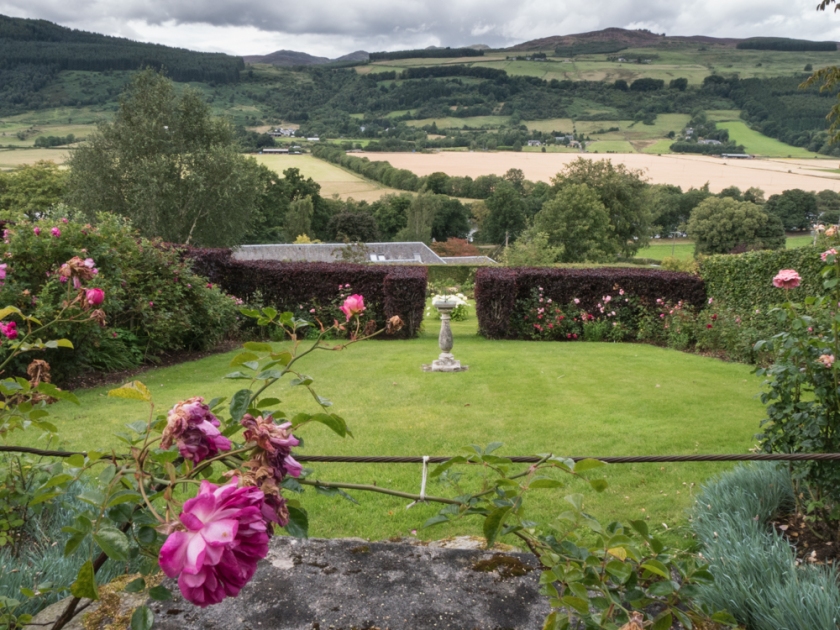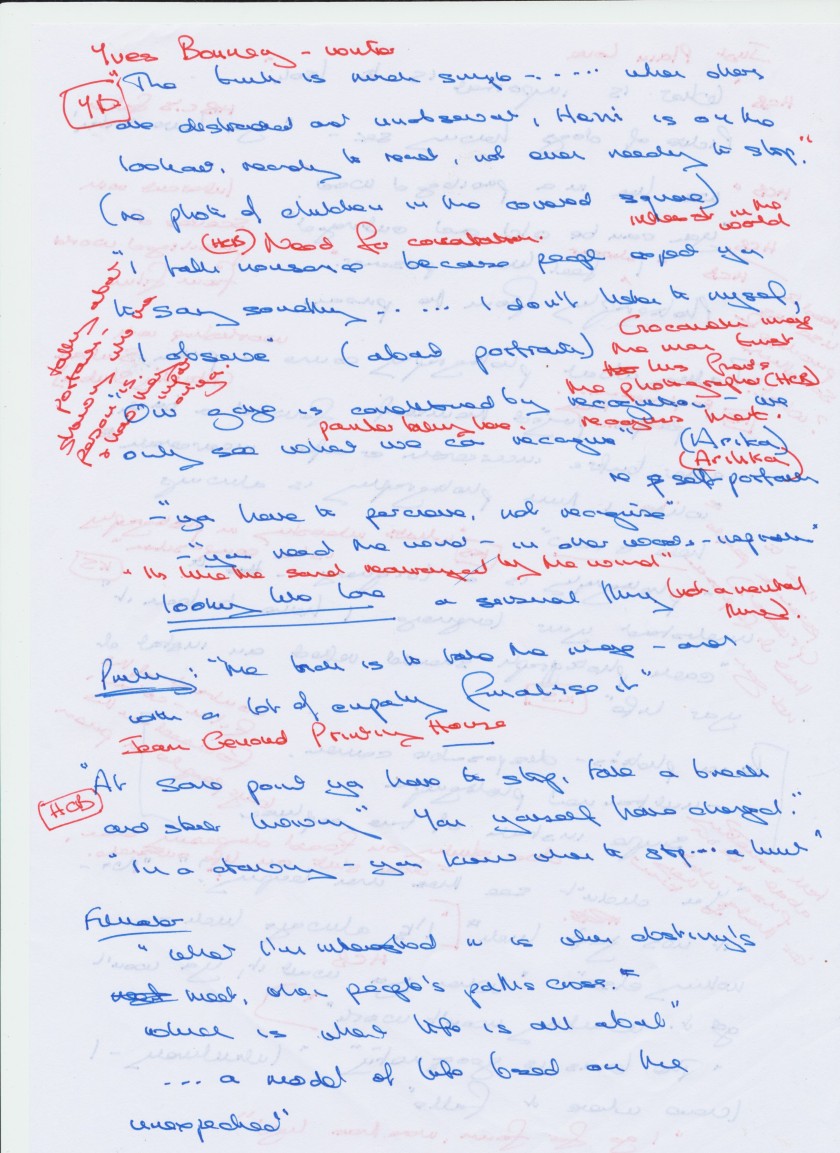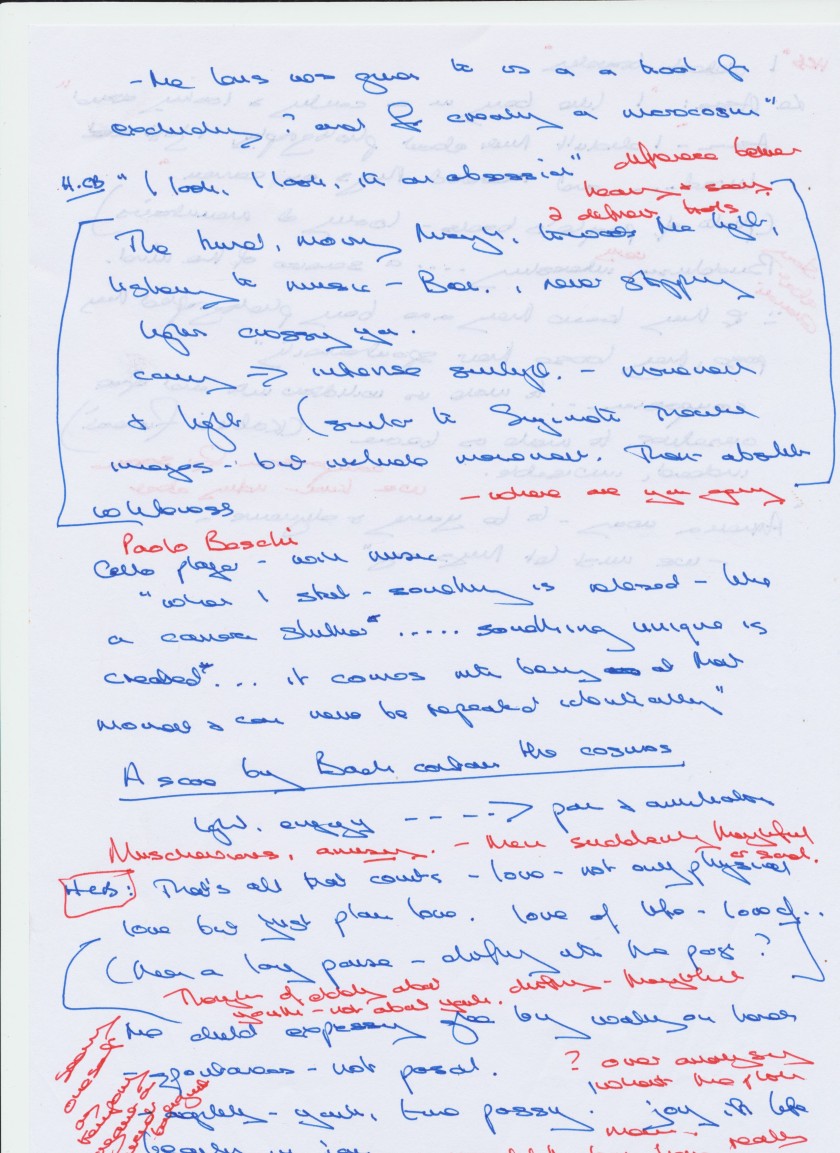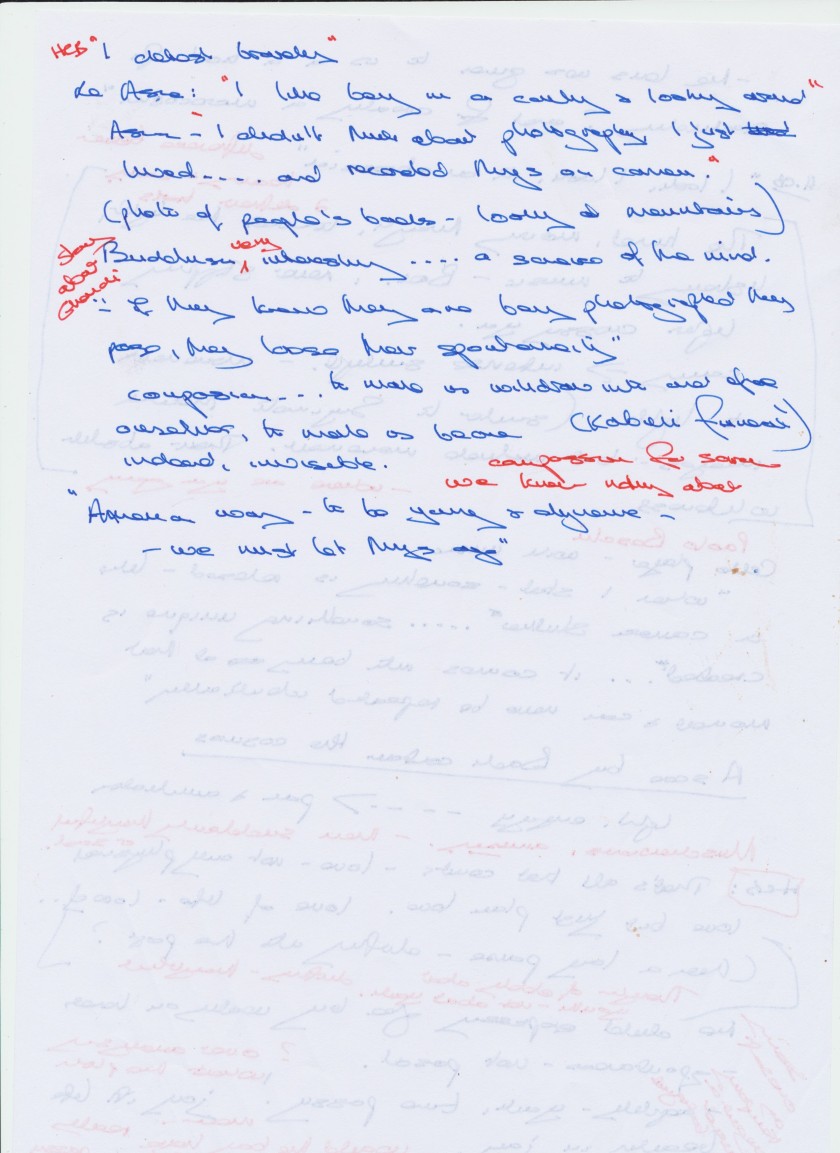The exercise is to compare the vision directly with your eyes versus the vision via a camera lens.
When you stand and look at a wide panorama the instinct is to look outwards first, taking in the whole scene and then look at the details. In this exercise you were asked to start with looking at the near ground, moving to the middle and then on to the distance.
I chose an outside landscape where I was standing on the side of a hill, with the ground falling away from of me, then rising to the hills in the distance. There was a fence just in front of me covered in roses in bloom. On looking at the scene I found that I tended to compartmentalise it into visual ‘rooms’ or areas. After the initial glance at the whole scene I would concentrate on a small piece at a time, such as the roses or the hills in the background. I found myself looking around the area- so taking in a greater field of vision than the camera would, even with a wide angle lens. Your brain automatically interprets what you are seeing as three dimensional (provided that you are looking with both eyes or have other reference points such as size of an object). I found it hard to look at, and take in, the whole area at once.
I then took a photograph without moving from the spot. I used a short focal length to get as much of the image in focus as possible, as your eyes automatically refocus between near and far so everything you are looking at appears in focus. On looking at the image the main differences between what I had ‘seen’ and the photograph were
- It is ‘flat’ – two dimensional
- The rose in the foreground is much more prominent than I was aware (and looks larger)
- The sky is much less prominent- I was automatically looking up, but the image is not large enough to show this even on the widest lens setting I had (14mm)
- There is no sense of movement – it was a very windy day, even taken at 1/60 sec it has ‘frozen’ the moment
- There is an odd bit of tree in the top right corner, my brain had ignored it as it was over my head
Learning points:
- This was an interesting exercise and clearly demonstrates that what your eyes are seeing is not the same as the image you are going to get
- Be aware of the limitations of the camera
- Watch for visual distortions with things that are very close to you – the rose




